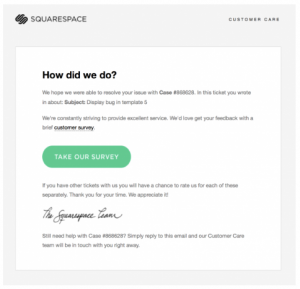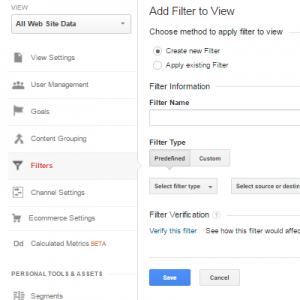 A corporate website is chock full of compelling, relevant and searchable information about a company – from product descriptions to location pages to blog posts. Many times companies place an emphasis on their Google search results rankings but tend to overlook the importance of internal search capabilities within their own websites. The ability to internally search a company’s website offers a better overall user experience, key insights on content and feedback on optimal site organization.
A corporate website is chock full of compelling, relevant and searchable information about a company – from product descriptions to location pages to blog posts. Many times companies place an emphasis on their Google search results rankings but tend to overlook the importance of internal search capabilities within their own websites. The ability to internally search a company’s website offers a better overall user experience, key insights on content and feedback on optimal site organization.
How easily can visitors find information on your website? As a website grows larger with more resources, content and blog posts, it becomes harder for visitors to find the content most relevant to them. For example, a financial brokerage firm can post a large amount of content in the form of resource articles, eBooks, white papers and blog posts on different aspects of the financial industry. How can customers find the specific topic or resource article they are looking for without scrolling through an entire library of content? The answer is simple. Customers can effortlessly find content on your site using a customizable internal search tool.
Benefits of Internal Website Search
When a prospective customer is searching within your website, their intent is different than when they conduct an external Google search. Because they are spending time on your site they are further along their buyer’s journey and offer you clues into what specific product or service they are interested in. Internal website search offers both navigational and informational benefits:
- Navigational: Internal website search allows the visitor to immediately go to a particular page they have in mind. It puts the potential customer where they want to be on your website as they look for a specific service, product or contact and support information. Prospective customers are also more apt to use an internal site search to help them find solutions to their business problems.
- Informational: By analyzing how and what visitors are searching for via your internal search tool, you can determine what new content you can offer, update your keyword strategies for organic search or even alter your site structure to present the most searched on topics first. Further, if existing customers are looking for specific information that you don’t yet have available, you can create new site pages, blogs, eBooks and case studies that are targeted to them. Utilizing search analytics will also help pinpoint website navigational or site structure issues. By correcting these issues, customers can get to the content they need most, including key transactional pages like forms and contact pages.
Internal Search Leaders
We’re often asked to recommend the best internal search tools. Typically, we recommed either Google Custom Search or Swiftype.
Google Custom Search
The most common internal search tool is Google Custom Search. This is a search bar that can be added to a company’s website to help visitors find information without navigating through the entire website. It is based on Google’s core search technology and serves up the most relevant search query results within your website. The search bar can be customized to the design of the website. You can also configure a variety of other options like multilingual search or image search with the Google search bar. Searches through Google Custom Search are also trackable with Google Analytics.
Google Custom Search also lets you define how your results are presented. Most major website development platforms like WordPress or Hubspot have plug-ins and instructions on how to install internal search tools on their websites. Google also offers help to website developers through their custom search tutorial. There are step-by-step instructions to put the code onto the site and on how to enhance and track search results.
Swiftype
Swiftype is another internal search tool that lets you enhance a user’s internal search experience by allowing you to filter search results by content type, date, author, pricing, and even synonyms. Swiftype’s technology will auto complete queries to provide content suggestions. You can even customize search results based on real-time queries. If visitors are searching for a specific financial tip via internal search, a content suggestion can be moved higher in the search results. An example of this would be the ACM Gold blog. We redesigned the ACM Gold website on the Hubspot platform and included Swiftype so customers can easily find business facts and financial and trading information.
Internal Search Best Practices
Internal search functionality will add value to your website and make it easier for your customers to find information they want exactly when they need it. Here are some best practices to consider when adding internal search:
- The search bar is usually found at the top of a website page or close to the the navigational bar or on a side bar for blogs.
- The search bar should be noticeable and contain a call to action button. The buttons should use terms like “Go”, “Find” or “Search Now.”
- The internal search tool should be set up to search the entire website including interior pages, blog posts, landing pages and forms. You never can be sure what type of information will encourage a prospect to call you or convert to a lead.
- On the internal search results page, bold the search query keywords so the user can easily identify those keywords in the content of your website. Swiftype, for example, allows autocomplete in the search results to offer more suggestions for content within your website.
Enhance Your Website with an Internal Search Engine
Consider adding an internal search tool to your website during your website redesign. A website can house a huge amount of information and internal search tools make it easy for your prospects, leads and existing customers to find what they are looking for and result in higher conversion rates and more satisfied website visitors.
Digital & Social Articles on Business 2 Community
(122)
Report Post






